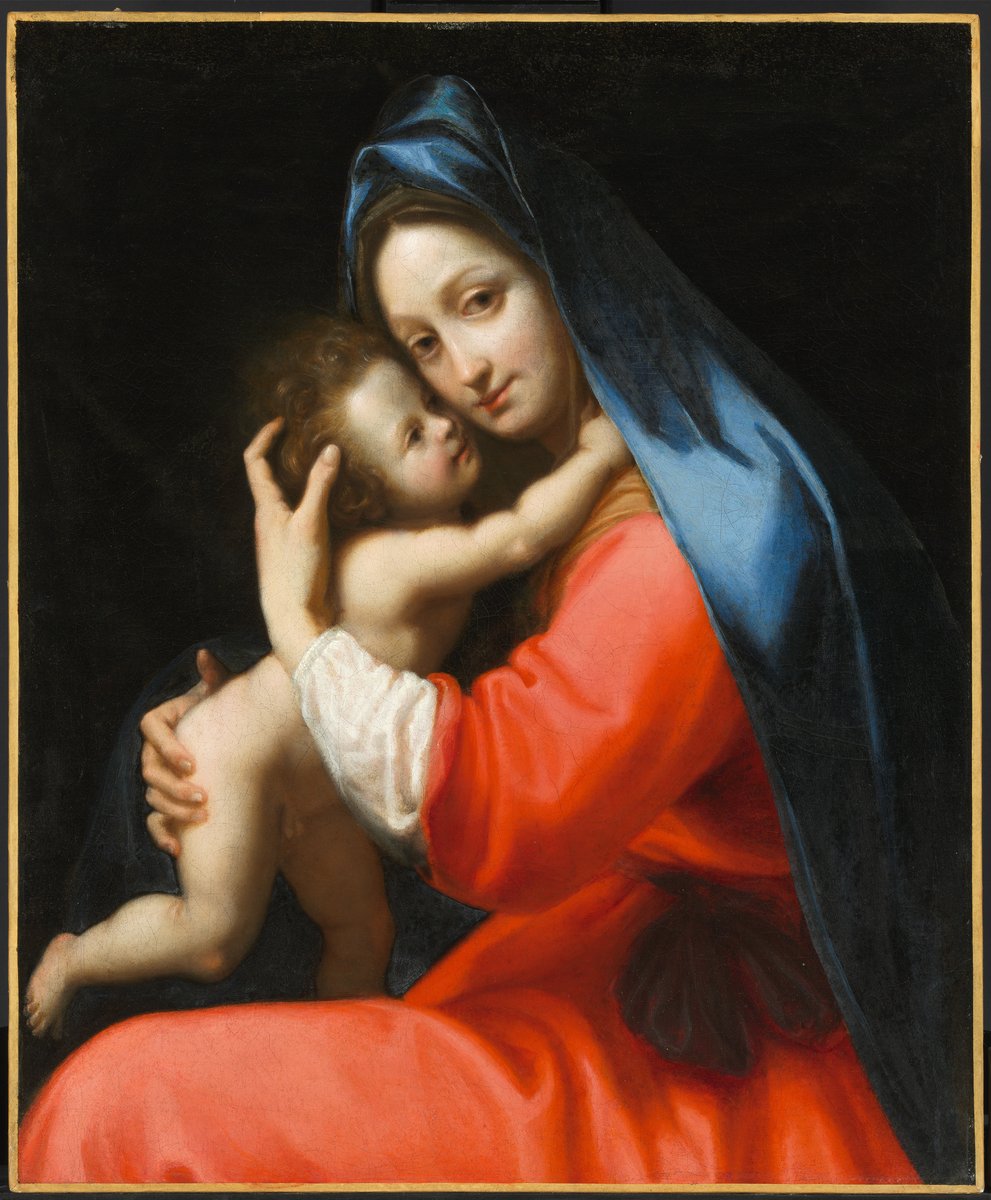
Virgin and Child
Old Master Paintings
| Artist | |
|---|---|
| Culture | Italian |
| Date | ca. 1423–1425 |
| Object type | painting |
| Medium, technique | tempera and gold on wood |
| Dimensions | 24 × 39.4 × 2.5 cm |
| Inventory number | 32 |
| Collection | Old Master Paintings |
| On view | Museum of Fine Arts, First Floor, European Art 1250-1600, Cabinet 19 |
“You have written well of me, Thomas” said the vision of Christ, according to the legend, to Saint Thomas of Aquinas, when he prayed for a sign of whether what he had written was true. The last great painter of the lyrical Sienese Gothic school, Sassetta’s brush brings to life with a kind of “magic realism” the enchanting world where the believer engages in intimate discourse with the divine sphere day by day. The saint now pleads for inspiration in front of a household altar, and his prayer is answered: Christ embodies in golden light and sends to him the dove of the Holy Spirit. The miracle takes place in the interior of a monastery, brought to life with many familiar details. The codices left open on the desks remind us the friars who used to fill the library with life. In the background a view opens onto a garden and within it a fountain, the centre of everyday life in the monastery.
This tiny masterpiece comes from a polyptych’s predella, the horizontal base supporting the larger pictures. The altarpiece was commissioned by the Sienese guild of wool merchants, and was kept locked in a cupboard in the guild’s headquarters. Each year however on the feast of Corpus Christi it was erected in front of the building, and an open-air mass was celebrated before it to the participants in the procession. The tradition lasted until the sixteenth century, when the altarpiece was moved into a church. Finally it met the fate of so many medieval polyptychs: it was sawn into pieces and sold to art collectors.
Axel Vécsey
Pigler, Andor, Katalog der Galerie Alter Meister, 1-2. Museum der Bildenden Künste, Szépművészeti Múzeum, Budapest. 2, Akadémiai Kiadó, Budapest, 1967, p. 621-622.
Boskovits, Miklós, Toszkán kora reneszánsz táblaképek: Szépművészeti Múzeum, Budapest – Keresztény Múzeum, Esztergom, Corvina, Budapest, 1968, no. 9-10.
Sallay, Dóra, Corpus of Sienese Paintings in Hungary, 1420-1510, Centro Di, Florence, 2015, p. 71-78, no. 1.
This record is subject to revision due to ongoing research.